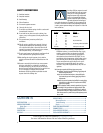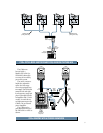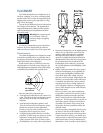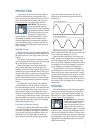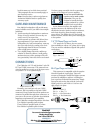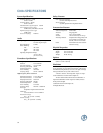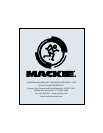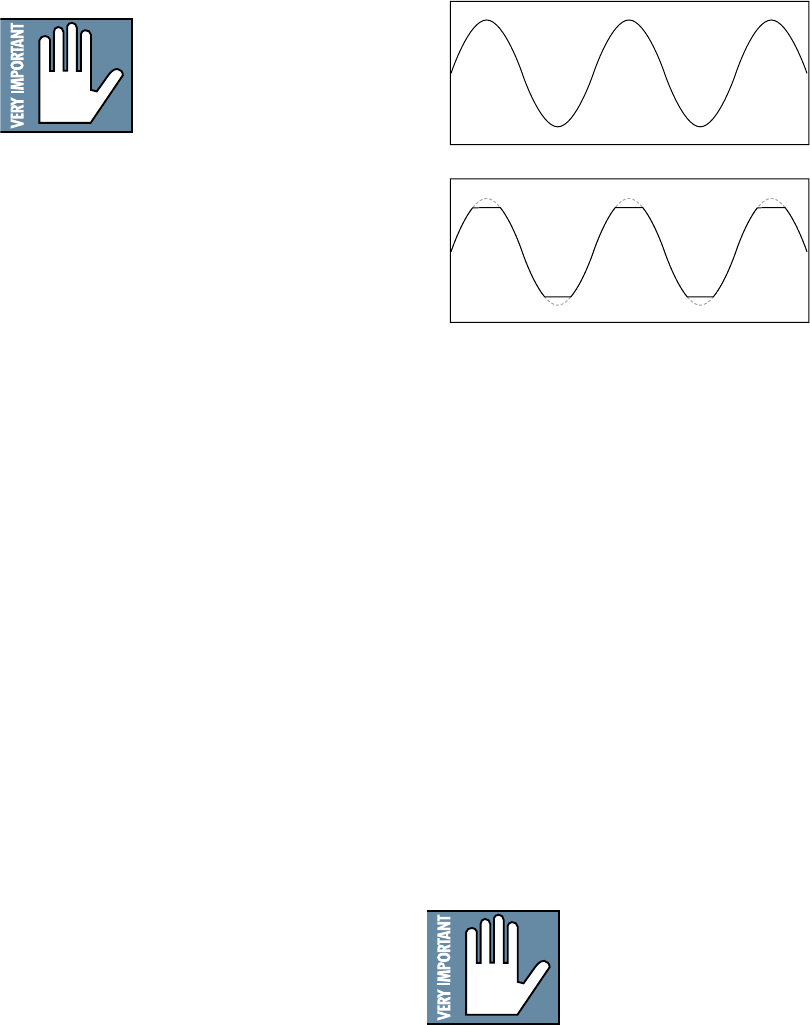
7
PROTECTION
A protection circuit is built into the C300z to
pro tect the high-frequency compression driver
from excessive power. When the pow er to the HF
driver approaches the max i mum, the power de-
liv ered to the driv er is mo men tari ly reduced.
CAUTION: The protection
cir cuit is de signed to protect
the HF driver under rea son able
and sen si ble conditions. Should
you choose to ignore the warn-
ing signs (i.e., fre quent clip
LED indications, ex ces sive dis tor tion), you can
still damage the speak ers in the C300z by over-
driving them past their recommended am pli fi er
power-han dling rat ings, or past the point of am-
pli fi er clip ping. Such damage is beyond the scope
of the war ran ty.
Amplifier Power
We give you three power-handling num bers for
the C300z: rms (continuous), mu sic, and peak. So
how much power do you re al ly need to drive the
C300z?
The answer to that question depends on what
type of pro gram material you are run ning through
the system and how loud it needs to be.
Some audio signals have lots of mo men tary
peaks whose amplitudes extend far above the
av er age overall level of the pro gram. Percussion in-
stru ments are a good ex am ple of this. Other types
of signals, like highly compressed rock mu sic, have
a high er average signal level with fewer peaks.
Speech reinforcement requires less power overall,
but involves large moment-to-moment vari a tions
in level.
Assuming you want to use the full ca pa bil i ty
of the loudspeaker, and the program contains at
least some momentary peaks, we recommend that
you use an amplifi er that is rated at twice the con-
tin u ous power rating of the loudspeaker (into 8
ohms).
For the C300z, this would be 300 watts x 2
= 600 watts per channel into 8 ohms. This in sures
that the amplifi er can reproduce peaks that are 6 dB
higher than the con tin u ous (rms) power-handling
rating before clipping oc curs.
Preventing Loudspeaker Damage
Speaking of clipping, this is likely the num ber
one cause of damage to loud speak ers. Clipping oc-
curs when the signal at the output of any device
in the system (not just the amplifi er) reaches its
maximum level. The input signal to the device
may continue to increase, but the output simply
stops, and is characterized by a “fl at-top” ap-
pear ance to the waveform when viewed on an
oscilloscope.
Normal Sine Wave Signal
☺
Clipped Sine Wave Signal
Clipping interrupts the motion of the trans-
duc er, creating distortion and ex ces sive heat in the
driver, which can damage it over time.
Some folks think that if they use a power am-
pli fi er whose power rating is below the maximum
power-handling rating of the loud speak er, then
they can’t possibly dam age the loudspeaker. But if
the amplifi er is driven into clipping, even a lower
power am pli fi er can damage the loudspeaker.
The bottom line is that to prevent dam age to
the loudspeakers, you must have a prop er ly op er -
at ing sound system. Proper op er a tion of a sound
system includes being aware of the types of audio
signals being re pro duced, controlling the output
levels ac cord ing ly, and operating all the devices in
the system so that no clipping occurs with in the
signal chain.
RIGGING
The C300z cabinets are fi tted with ten rig ging
points as shown in the di a gram on the previous
page. These are M10 inserts. M10 thread ed eye-
bolts (M10 x 1.5 mm x 20 mm) are avail able to fi t
in these in serts (PA-A1 Eye bolts).
WARNING: Never at tempt to
suspend the C300z loudspeak-
ers by their handles. If you
want to sus pend them, use the
rigging points only. Con sult a
pro fes sion al rig ger or struc tur al
en gi neer prior to sus pend ing loud speak ers from a
struc ture not in tend ed for that use. Always know
the work ing load lim it of the struc ture sup port ing
the loud speak er ar ray. Al ways make sure that the
rig ging hard ware minimum rat ing is at least fi ve
times the actual load.




